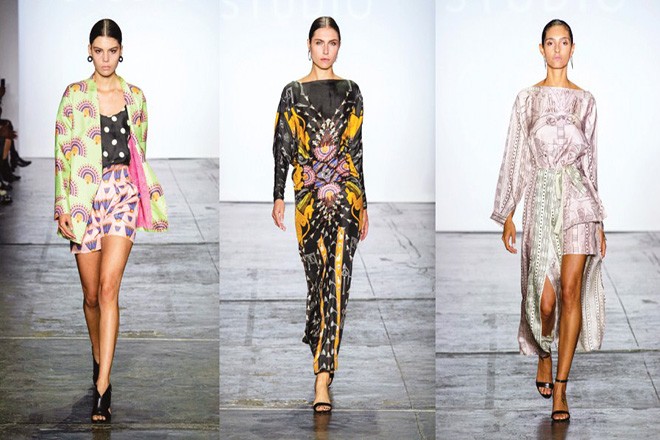

Year after year, Pakistan’s fashion designers continue to show abroad, all over the world, in solo shows, collaborations and even fashion weeks. We don’t get to see those shows live but we do get to hear about their success. How much of it is true and what is the barometer by which the success of a foreign show is judged?
There were certain brands who successfully made their way to the realms of international fashion in 2018. Instep spoke to them to examine the short and long term impact on their businesses and the international market’s interest in the Pakistani product.
Sania Maskatiya showed a line under her sub brand Sania Studio at NYFW in a collective showcase for emerging designers. This year in February, they are set to return to the platform to further strengthen the ties they made last year. CEO of the brand, Umair Tabani shared in a conversation with Instep, "The brand definitely got exposure but for the designers themselves it’s a great way to learn. It helps them grow in a different direction and conceive things which are more internationally appealing because these days, it’s all a melting pot of things blended in from the east and west."
Tabani explains that it’s not impactful overnight but there’s a whole process behind it. When they participated in Beirut Fashion Week ’17 they met some buyers and are still following up with them. It’s different to Pakistan where they come to your store and say they want it at their multi-brand outlet. There are separate events for buyers so we plan to go see how people are selling their goods." The essentials, however, have to be in place; a store at these conventions along with a strong PR company that can steer you in the right direction and a website with the correct pricing. Having all these elements in place will maximize the impact of a brand showing internationally.
Madiha Latif, CEO of Zuria Dor, who opened Jakarta Fashion Week late last year agrees. There are mostly long term strategies, which don’t have many short term results so it’s very taxing." Latif found that they were able to break down many myths with people who had wrongly generalized Pakistan to be all conservative.
"It’s a soft tool to break down barriers as one can see the Indian market already does it very well. It may be a much longer investment but I feel we need to go down this way; that’s how export works. It takes time to establish trust, especially with the amount of mistrust for Pakistan and its products."
"The international market wants to see a collection season to season and there’s a 6-month lead time to the buying. Sometimes it can be longer, especially in the beginning when building trust with your new relationships," she says. The brand is participating in another show in Paris in March which is buyer centric so they’re inviting their leads from Jakarta to come review their Autumn/Winter ’19 collection.
When asked about the appreciation for the Pakistani product, mainly theirs which has detailed handwork stitched into dresses and pants, Latif revealed, "People appreciate the kind of value addition we have. It’s very expensive in the European market and the South East Asian markets don’t know how to do it." She continued, "Most of the fabric there is machine produced so when they found out it takes hundreds of hours to make, their jaws dropped. Pakistani products need to be repackaged and made relevant for the 21st century."
Zohra Rahman is a jewelry brand based out of Lahore, creating original, eclectic and very experimental collections. In the three years it’s been around, Rahman has taken her collections to London Fashion Week and Paris Fashion Week with four shows and to New York as part of their press days. She feels that buyers want to see young brands being consistent before they actually buy because they have to build their faith in the idea that the brand is a sound business and has not gone bankrupt after the first season. She admits that it took her a while to understand their perspective, "If you’re a shop, each season you’re not going to get a new brand, you’ll work with the same and build them on your portfolio and that’s why it takes time."
The international market is very saturated but in Rahman’s experience they are curious about her eponymous label because especially because it’s coming out of Pakistan. "LFW happens in mostly one venue and big brands have their own solo shows. In Paris galleries and shops rent out their space for showroom purposes and most of the buying happens there because it’s at the tail end of all fashion weeks. To rent out a space for a showroom is difficult but is the eventual goal," she shares.
To be taken seriously by buyers and stockists, there is long term planning and heavy investments with time and money required. Once a brand has worked on their product, it makes sense to push their product into international markets, especially since apparel exports from South Asia are on only the rise.